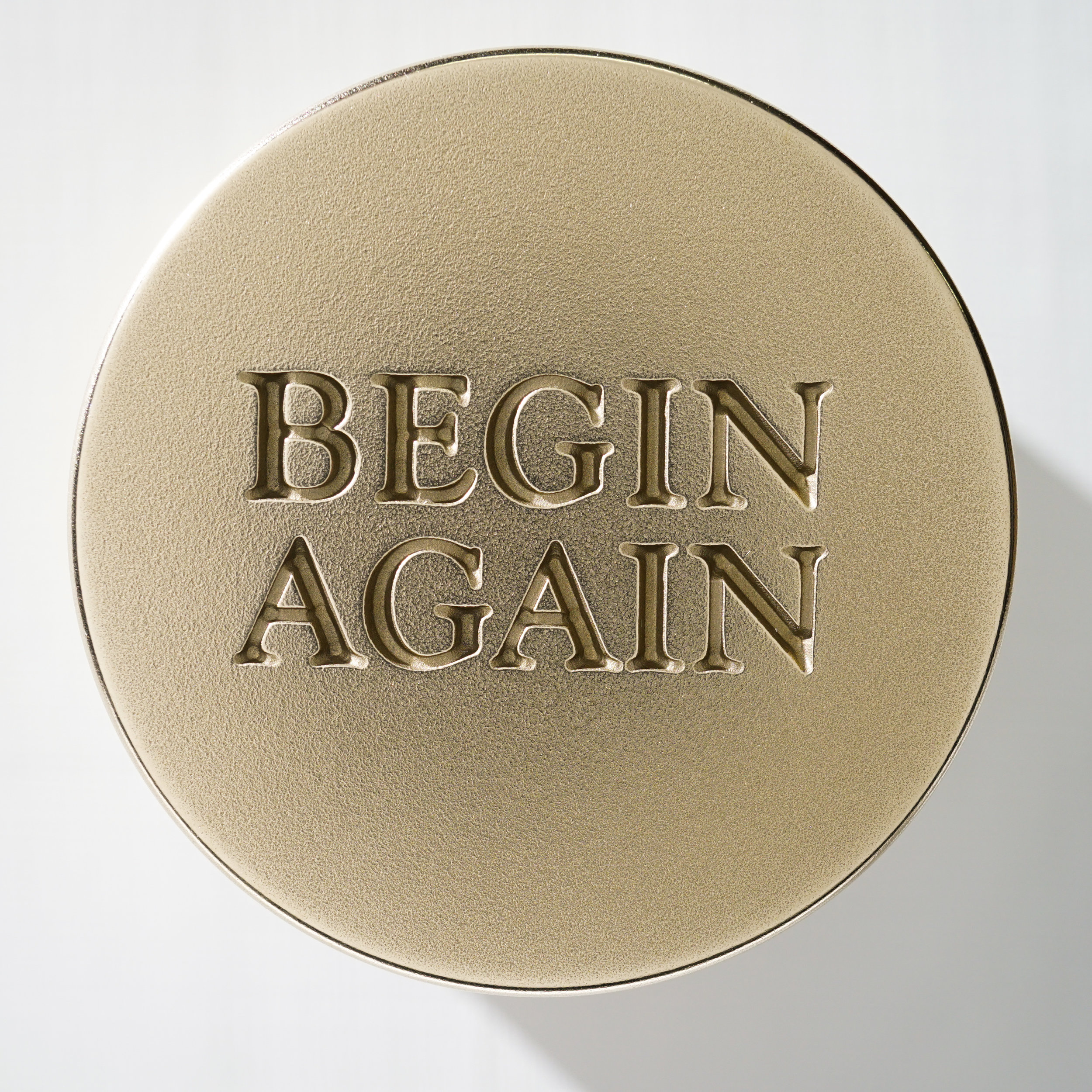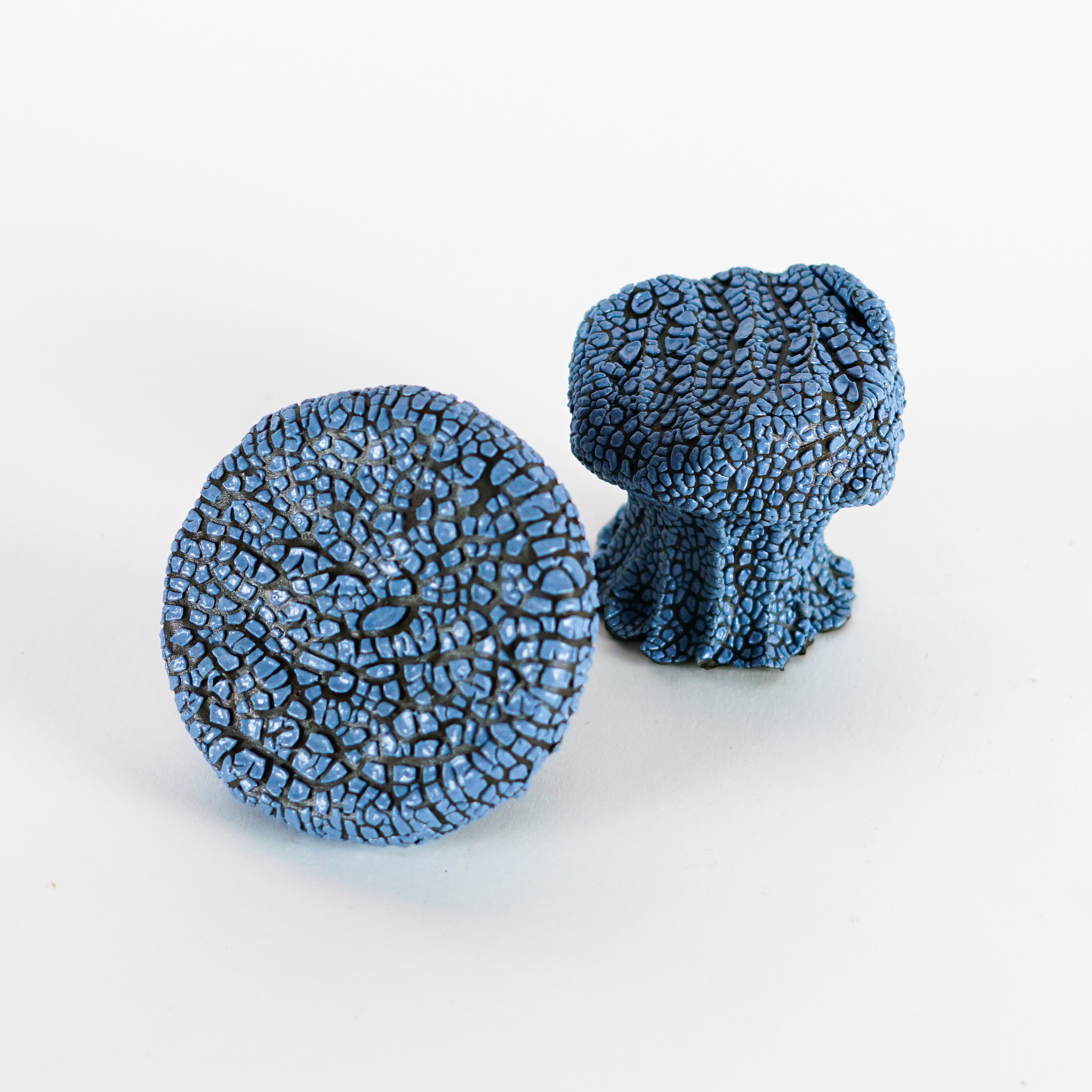The Designers
Yvette Chaparro : 252 Doorknob
This piece represents the essence of the doorknob. The stem of the handle is formed by ribs that hug the spindle, these ribs grow in space to form a surface for the hand to grab onto and rotate the spindle, activating the door lock mechanism. The ribbed surface enhances the grip feeling of the hand on the doorknob, while keeping the spindle visible as an indication of its function.
Rama Chorpash : Whorl One
Whorl One was designed as an intertwined three-dimensional open spiral lattice structure. Using generative parametric software Rama Chorpash explored whorled flower petal and leaf growth patterns. Like a garden faucet handle Whorl One amplifies the haptic hand grasp through a poetic skeletal structure that provides essential ergonomics.
Claesson Koivisto Rune : Soft
A handle that is both ’soft’ and ’strict’ at the same time. A hybrid between a generic handle and a handle with a design feature. Seen from the front it is a normal handle. But viewed from a higher angle, the surprising design of the Soft handle becomes apparent.
Keetra Dean Dixon : Doorbell
Both doorknob and musical instrument, the Doorbell borrows sound of jingling keys and shopkeeper bells to ring in your entrance. Twist for a soft jingle, pluck the geometric clapper for a pronounced chime, or strike the bell with items in hand.
Joe Doucet x Brian Ornduff : Tortu Doorknob
Doorknobs have historically come in two varieties, the traditional round knob and the lever style. Both have their advantages, a round knob is less obtrusive while a lever allows a firmer grip. Tortu creates a third typology utilizing the best of each while eliminating their respective drawbacks.
Rogan Gregory : Anomalous Liaison
Doors perform a function that is both essential and symbolic. They protect what is inside, but simultaneously deny passage to the “other side.” The handle I created prompts the user to insert their thumb into the lever initiating consent prior to entry. There is a sense of anomalous intimacy, commencing an impromptu liaison before full entry is granted.
Fumiko Ito : Home, My Place
A door handle—an in-between object—spatially connecting the inside and the outside. Home, My Place also transfers the action into emotional memories, eternally binding one and their family tightly.
Liz Jackson : Super Secret Canehole
Liz Jackson designed a door that can only be unlocked with a cane, flipping the traditional idea of accessibility. Jackson says of her design, “Keyholes are ubiquitous. But super secret caneholes are not. This doorknob is not intended to be accessible to all, but rather, welcoming to some.”
Bertille Laguet : 1907 Doorknob & Hammer
Bertille Laguet gave her Pétanque-inspired knob a touchable surface using a custom-made hammer. “When thinking about a doorknob, shape is not the first thing that comes to my mind. It is the memories of the texture and the feeling in my hand.
Inna Lobel : Terra Knob
Terra Knob is a probiotic doorknob. Recent discoveries suggest we rely on microbes in our natural environment, such as those present in healthy soil, to train our immune system to ward off disease. In our zeal for cleanliness, we’ve eradicated many of these organisms from our lives, resulting in an influx of disease. Terra Knob reestablishes a healthy microbe ecosystem within our built environment by dispersing probiotic particulates each time that the door is opened.
Steph Mantis : Begin Again
A door symbolizes new opportunities, a change of perspective; a chance to begin again. Through subtle use of text, the knob becomes a tool; aligning the body and mind as it enters a liminal space. In this balanced position, spiritual growth is possible. By carving this classic Trajan font derivative and aligning the last two letters of each word, the artist reminds us that to truly begin again, we must ultimately journey inward.
Jasper Morrison : Handle Series 1144
This door handle represented a big step for me, partly because it was to be mass produced and partly because I found a new way of working. Following the “ready-mades”, I had come to believe that it was not the designer’s job to invent form, just to apply it in the right places at the right time and for good enough reasons.
Damian O’Sullivan : Door, Keyhole & Wedge
Ever walked into the wrong meeting room to find a full assembly of onlookers staring back at you? Not with this door! Simply peep through the keyhole (with its integrated magnifying lens) and check you’re at right place at the right time. The door wedge is a useful but slightly anachronistic object, and never seems to be around when you need it. With this door, the wedge sits atop of the door, always at the ready, to hold your door ajar.
Pete Oyler : Half Standard Doorknob
Established in 1918, the American National Standards Institute (ANSI) has had significant impact on the design and development of residential hardware, including the doorknob. A formal investigation of the ubiquitous interior doorknob, the Half Standard Doorknob foregrounds a simultaneously familiar and surprising experience of touching. Cast in bronze–an antimicrobial material long associated with doorknobs–the halved diameter draws attention to an action–and a standard–that has become nearly invisible to us.
Karim Rashid : Blip Door Handle
Humans touch an average of 600 objects a day and the potential for them to generate pleasant experiences in us is great. The door handle, as an object that grants access, needs to be inviting, friendly, and contemporary. Blip challenges the standard typology of door handle design with its signature sensual, iconic form, addressing the notion that every aspect of our human experience can be designed, and no detail is too small.
Tucker Viemeister : Red Feather Lever
The first thing you touch before you open the door—this one you see first and maybe opens your mind. Inspired by a 3D doodle, my Red Feather Lever is more about a light touch than ergonomic function (although it’s more ergonomic that it seems). This wooden model is meant to be fabricated in metal (recycled aluminum or bronze) and available in many colors to brighten the day.
Natalie Weinberger : Ceramic Doorknob
Natalie Weinberger gently guides her materials to illustrate the patterns and infinite variety revealed in nature. Her wheel thrown doorknob is made of dark stoneware with blue crawl glaze. The highly textured quality of this glaze is what makes this otherwise conventional doorknob an experiment in tactility.
Allan Wexler : Here’s the Thingness
Here’s the Thingness is the most functional doorknob ever constructed.
Traditional knobs are round, making it impossible to open a door when your hands are full. This retrofitted knob illustrates extreme function. A scrap of wood is whittled down to imply engagement with the hand but also allowing an elbow to open the door. The wood extender is attached to the knob using a round-head brass screw and epoxy putty to prevent rotation. It’s a small thing - but it’s the doorknob that has the power to unlock a home.

















